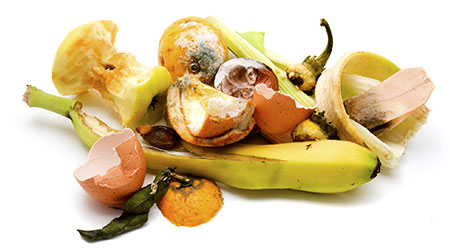
National nonprofit Keep America Beautiful and the United States Composting Council (USCC) announced that they, along with five other participating nonprofits and government agencies, recommend designating green as the voluntary container color standard for organics collection containers. This initiative was simultaneously announced at the USCC’s 25th Annual Conference in Los Angeles and at the Keep America Beautiful National Conference in Washington, D.C., both taking place through Jan. 26.
The voluntary standard has been established to address one of the key barriers to more effective recycling and organics collection, beyond convenience. Key factors supporting the recommendation of green as the preferred container color for organics collection containers are:
1. A distinct, consistent color for organics containers provides a visual cue for program participants that studies indicate will likely increase recognition of the purpose of the container and the quality of recovered material;
2. A distinct color that is different from the color used for trash and recycling collection containers can increase recovery; and
3. Consistency in messaging across jurisdictions – including the use of container color – helps to minimize confusion and contamination.
The initial organizations joining Keep America Beautiful and USCC in recommending this voluntary standard include: the City and County of San Francisco, GreenBlue, National Recycling Coalition, New York State Department of Environmental Conservation, Seattle Public Utilities and the Vermont Agency of Natural Resources. Additional organizations are expected to join the “Organics Collection Container” working group and support adoption of the voluntary standard throughout the year.
“According to the U.S. EPA, food waste makes up 21 percent of municipal solid waste that is landfilled,” said Brenda Pulley, senior vice president, recycling, Keep America Beautiful. “While consumers’ first effort should be to reduce food waste, once the food waste is generated we’ll improve organics collection by taking the simple step of standardizing the color of the organics collection containers. And we’ll have the residual benefit of providing quality feedstock for composting.”
“Education and identification of containers and proper ways of recycling food scraps is critical to one of the compost manufacturer’s biggest challenges: contamination. This project will help to clarify organics containers and capture more organics for composting,” said Frank Franciosi, USCC Executive Director.
Importance of Color
According to an online survey regarding trash and recycling container color, shape and signage, 79 percent of survey participants identified blue containers as recycling bins. Survey respondents were least certain about the color of a compost container – 51 percent selected brown and 41 percent selected green. Brown was also associated with trash for many respondents, suggesting that green may be the most appropriate color for organics collection.
The study was conducted online by Keep America Beautiful in partnership with Monique M. Turner, Ph.D., Associate Professor, Department of Prevention and Community Health, Milken Institute School of Public Health, at The George Washington University, and included 697 participants.
Additional research on color, cognition and recycling, conducted by researchers at the University of Michigan, hypothesized that the visual salience of recycling bins encourages recycling behavior, presumably through a peripheral route of persuasion. In this study, recycling bins and trash bins of the same shape and size were paired as either “Green Recycling Bin/Grey Trash Bin” or “Grey Recycling Bin/Grey Trash Bin.” All bins were labeled as either “Trash” or “Recycle” in black on white background. Forty-eight undergraduate students participated in the study and were randomly assigned to either the high-salience (green/grey) or low-salience (grey/grey) conditions.
Researchers found that:
• 52 percent used recycling bin in the grey/grey condition (signage distinction only); and
• 88 percent used recycling bin in the grey/green condition.
Thus, color can affect the user and consequently trigger the associated desired behavior.
Finally, color can be an important visual cue for communicating a message regarding what the container is designed to be used for. In a branding context, color is often noted as offering “an instantaneous method for conveying meaning and message without words.”
The working group gathered information about color associations adopted in curbside collection programs across the country. It has been noted that green is the most commonly adopted color used for organics collection containers.
For further information about the “Organics Collection Container” working group or the organics collection container standards, contact Keep America Beautiful Senior Vice President/Recycling Brenda Pulley at 202.688.0603 or bpulley@kab.org or U.S. Composting Council Director of Education Cary Oshins at 301.897.2715 x4 or cary.oshins@compostingcouncil.org.
In an another collective effort to support sustainability, waste reduction and zero waste initiatives in the workplace, Keep America Beautiful, USCC and Kimberly-Clark Professional teamed up in 2016 to introduce a free "Guide to Workplace Composting." The guide provides step-by-step instructions and resources to help office buildings, manufacturing facilities, hotels, hospitals, universities and other workplaces divert organic matter – such as food scraps, used paper towels, coffee grounds and coffee filters – from landfills through composting.

 The Down and Dirty on Cleaning in Virus Season
The Down and Dirty on Cleaning in Virus Season How Surfactant Use is Expanding in Commercial Cleaning
How Surfactant Use is Expanding in Commercial Cleaning